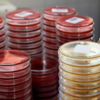(10ml).jpg)
When it comes to viral testing, the correct storage and transportation of virus transport media (VTM) is essential for maintaining sample integrity. Whether you’re working with clinical samples, conducting research, or involved in diagnostics, following proper protocols ensures the reliability of your results. In this article, we will guide you through the best practices for storing and transporting VTM, ensuring the samples remain viable for accurate testing.
1. Understand the Importance of Virus Transport Media (VTM)
Virus transport media is a specialized solution used to preserve viral samples collected from patients or environmental surfaces. The media ensures the virus remains stable during transit to a laboratory for testing. This stability is crucial as viral RNA or DNA can degrade quickly if not handled correctly.
2. Proper Storage Conditions for VTM
Temperature Control:
Virus transport media should be stored at the appropriate temperature to preserve the integrity of the virus. Generally, VTM should be kept at 2–8°C (refrigerated) if it is to be used within a short timeframe. For long-term storage, it is advised to keep VTM at -20°C or lower to prevent any degradation of viral samples.
Avoid Freezing and Thawing Cycles:
Repeated freezing and thawing of virus transport media can damage viral particles. Therefore, it is essential to avoid unnecessary freezing and thawing cycles. Always store VTM in sealed, labeled containers to avoid contamination or accidental exposure.
Dark Storage:
While VTM is generally stable under standard lighting conditions, it’s a good idea to store VTM away from direct sunlight or extreme lighting conditions. Ultraviolet light can degrade viral RNA and DNA, reducing the reliability of your samples.
3. Best Practices for Transporting VTM
Maintain a Consistent Temperature:
When transporting virus transport media, it is crucial to keep the samples within the recommended temperature range. If shipping samples to a testing facility, use cold chain logistics—that is, ensure that VTM is kept at the proper temperature from pick-up to delivery.
Use Insulated Packaging:
To maintain the cold chain during transport, pack virus transport media in insulated containers with sufficient dry ice or cold packs. This helps regulate the temperature and ensures that the samples do not exceed their temperature limits.
Label Clearly:
Make sure to clearly label all containers of virus transport media with essential details like the type of sample, date of collection, and temperature storage requirements. Proper labeling helps avoid confusion and ensures that the samples are handled correctly upon arrival.
Choose the Right Courier:
When shipping VTM, especially for urgent testing, it’s important to choose a reliable courier service experienced in handling biological samples. Many courier services offer specialized temperature-controlled transportation, ensuring your samples remain within the required conditions during transit.
4. Minimize Delays and Risks of Contamination
Timeliness is Key:
The quicker the virus transport media reaches the lab, the better the chances of accurate results. Delays or improper handling can lead to a degradation of viral material, which can compromise the quality of the test.
Avoid Contamination:
Ensure that your virus transport media containers are properly sealed to avoid leaks and contamination. Only qualified personnel should handle and package the samples to reduce human error and ensure safety.
5. Conclusion
Proper storage and transportation of transport media are critical components of any diagnostic or research protocol. By following the outlined best practices, you can ensure that viral samples remain viable, allowing for accurate and timely test results. Always remember to maintain the required temperature conditions, use the right packaging, and minimize exposure to light and environmental factors. Adhering to these guidelines will help optimize your testing process and lead to more reliable results.
Recent Posts
- Transport Culture Media Selection: The Science Behind Sample Stability
- Sterile Sampling Bags: The Critical Defense Against Contamination in Microbiology
- Ready-to-Use Culture Media: Revolutionizing Efficiency in Microbiology Labs
- Granular Culture Media: Revolutionizing Microbial Growth and Research Efficiency
- European Pharmacopoeia Culture Media Standards: Ensuring Pharmaceutical Safety and Compliance



